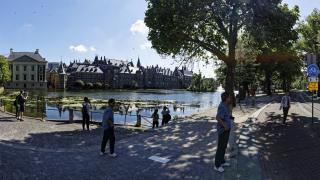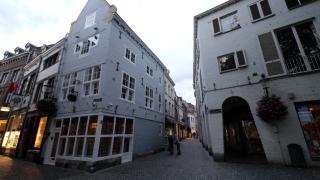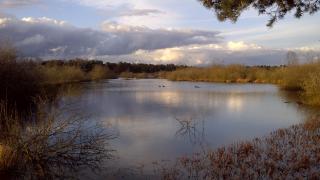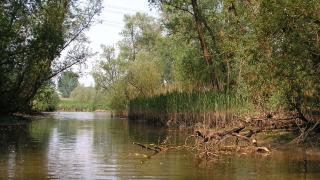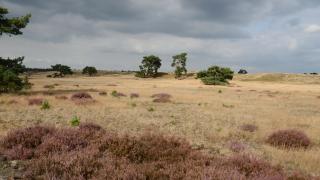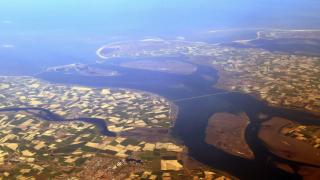Cycling Culture Unveiled
Cycling is integral to daily life in the Netherlands. Over 35,000 kilometers of dedicated fietspaden (bike paths) cross the country. Locals use bikes for commuting, shopping, and school runs. In cities like Amsterdam and Utrecht, more than 40% of all trips are by bike. Dutch children learn to cycle from a young age. Most adults own at least one fiets (bicycle).
What makes Dutch cycling unique?
- Bikes have right of way at many intersections.
- Bike parking stations (fietsenstalling) are common at train stations and city centers.
- OV-fiets rental bikes are available at over 300 NS train stations. Rental costs start at €4.45 per 24 hours.
- The terrain is flat, making cycling accessible for all ages.
- Distances between cities are short; Amsterdam to Haarlem is 20 km by bike.
- Rain or shine, locals cycle year-round.
Cycling is not just transport; it’s a social norm. Dutch infrastructure prioritizes cyclists, with clear signage and traffic lights for bikes. The Netherlands is considered the world’s top cycling nation due to this deep integration.
Bike rental is widely available in the Netherlands. Most train stations (NS-stations) offer OV-fiets rentals for registered users. OV-fiets costs €4.55 per 24 hours. Many city centers have private rental shops, especially in Amsterdam, Utrecht, and Rotterdam. Online platforms like MacBike and Swapfiets allow advance bookings and monthly subscriptions. Types of bikes available include:
- Standard Dutch city bikes (stadsfiets) with coaster brakes
- E-bikes (elektrische fiets) for longer distances or less effort
- Cargo bikes (bakfiets) for carrying children or luggage
- Tandems and children’s bikes in tourist areas
Rental costs (2024):
- City bike: €10–€15 per day
- E-bike: €20–€30 per day
- Cargo bike: €25–€35 per day A deposit or ID is usually required. Some shops ask for a €50–€150 deposit. Always check lock quality and tire condition before renting. For short city trips, a basic city bike is sufficient. For countryside routes, consider an e-bike. If traveling with children or luggage, bakfiets are practical. Travelers bringing their own bike can take it on Dutch trains for €7.50 per day (fietsticket). Not all trains allow bikes during rush hour. Confirm bike policies before boarding.
Top Cycling Routes & Regions
The Netherlands offers diverse cycling routes for all levels.
- The Ronde van Nederland is a classic long-distance route. It covers over 1,200 km and passes through every province.
- Zeeland's coastal routes feature dykes, North Sea views, and windmills. The LF1 Noordzeeroute runs 330 km along the coast.
- The Utrechtse Heuvelrug National Park has forested trails and gentle hills. Routes here range from 20 km to 70 km.
- Tulip field routes near Lisse and Noordwijk are best in April and May. Distances vary from 15 km to 40 km.
- The Hoge Veluwe National Park offers 40 km of paved paths. Free white bikes are available at park entrances.
Urban cycling is efficient and safe.
- Amsterdam has over 500 km of bike lanes. The Amstel River route is popular for city and countryside views.
- Utrecht’s city center is car-free. The Singel canal loop is 6 km and circles the old town.
- Rotterdam features modern bike bridges and waterfront routes. The Maasboulevard is a scenic 10 km ride.
Route planning is simple.
- The LF-routes (Landelijke Fietsroutes) are national long-distance paths. They are clearly signposted with green-and-white signs.
- The knooppunten system uses numbered junctions. Cyclists follow a sequence of numbers for custom routes.
- Free route maps are available at VVV tourist offices and online at fietsnetwerk.nl.
Day trips and multi-day tours are easy to organize.
- Many routes connect with train stations. Bikes are allowed on trains outside rush hours for €7.50 per day.
Rules, Etiquette & Safety
Cyclists in the Netherlands must follow strict traffic rules.
- Always ride on marked fietspaden (bike paths) where available. Use the right side of the lane.
- Cyclists have right of way on most bike paths, but always yield to trams and emergency vehicles.
- At unmarked intersections, yield to traffic from the right (rechts heeft voorrang).
- Use hand signals when turning. Extend your arm fully to indicate direction.
- Bike lights are mandatory after dark. White or yellow front light, red rear light. Fines for missing lights start at €55.
- Bells are required. Use your bell to warn before overtaking or passing pedestrians.
- Overtake on the left. Announce yourself with a bell or a polite “excuseer.”
- Helmets are not mandatory for adults, except on speed pedelecs (fast e-bikes). Most Dutch cyclists ride without helmets in cities.
- Watch for blue bike signs and painted bike symbols. These indicate bike lanes or crossings.
- Pedestrian zones (voetgangersgebied) may restrict cycling during busy hours. Walk your bike if required.
- In cities like Amsterdam and Utrecht, intersections can be crowded. Slow down and make eye contact with drivers and other cyclists.
- In case of an accident, exchange details and call 112 for emergencies. Report serious incidents to the police (Politie).
Smart Strategies for Travelers
Dutch weather is unpredictable. Rain is common year-round. Pack a waterproof jacket and pannier covers. Wind can be strong, especially near the coast and in Friesland. Gloves and layers are essential in spring and autumn.
Bike theft is a major issue in Dutch cities. Always use two locks. A ring lock (ringslot) is standard; add a heavy chain lock. Park only in official fietsenstalling (bike parking). Many stations offer guarded parking (fietsenstalling bewaakt) for €1.35–€2.50 per day. Consider bike insurance (fietsverzekering) if renting for several days.
Combining bikes with public transport is easy. On NS trains, a bike day ticket (fietskaart) costs €7.50. Bikes are allowed outside peak hours (6:30–9:00, 16:00–18:30 excluded). Most Intercity trains have dedicated bike compartments. On buses and trams, folding bikes are usually allowed for free.
Route planning is simple. Use the Fietsknooppunt network and apps like Fietsersbond Routeplanner or Komoot. Signposted junctions (knooppunten) cover all regions.
Bike repair shops (fietsenmaker) are widespread. Many are near stations and city centers. Look for ANWB Wegenwacht Fiets for roadside assistance.

